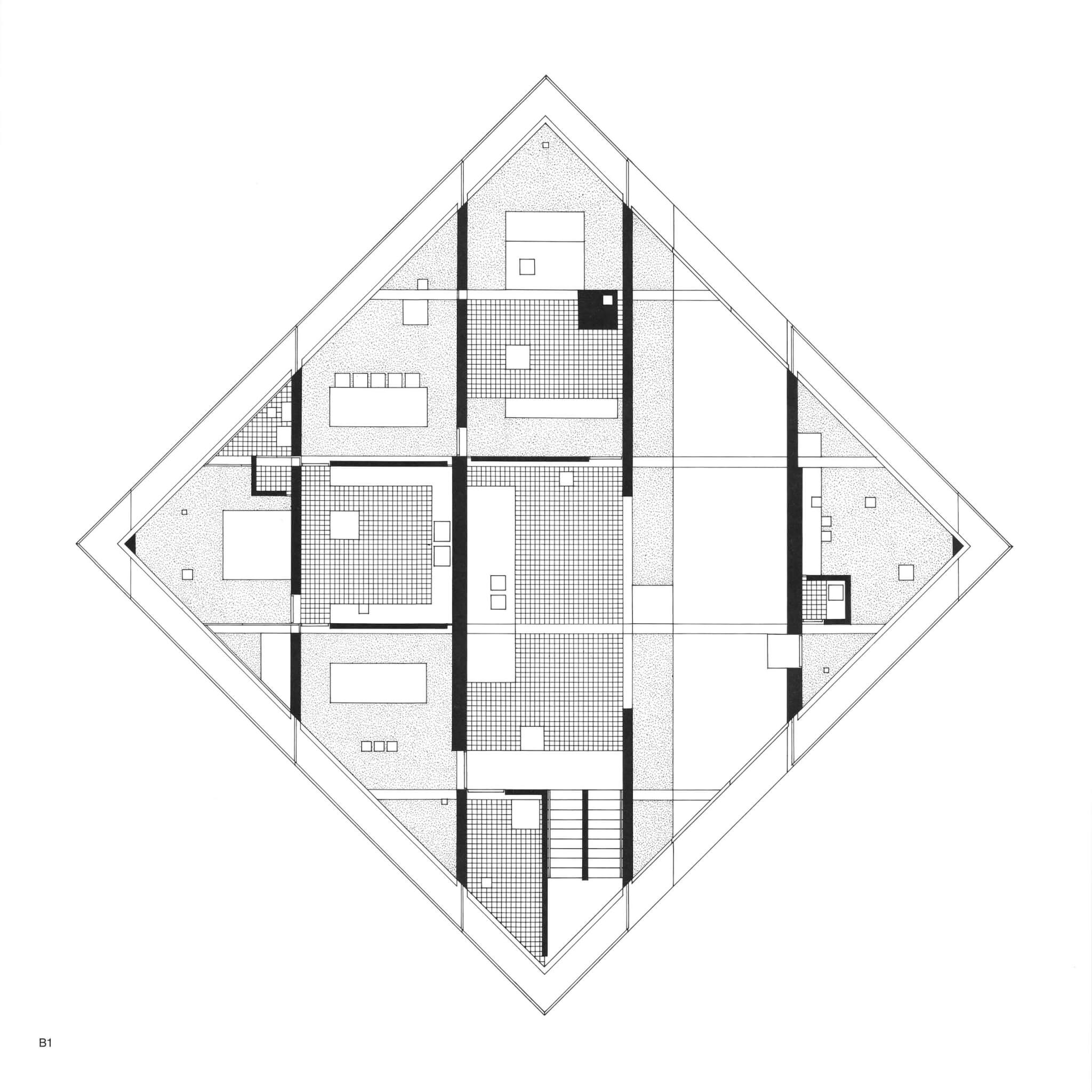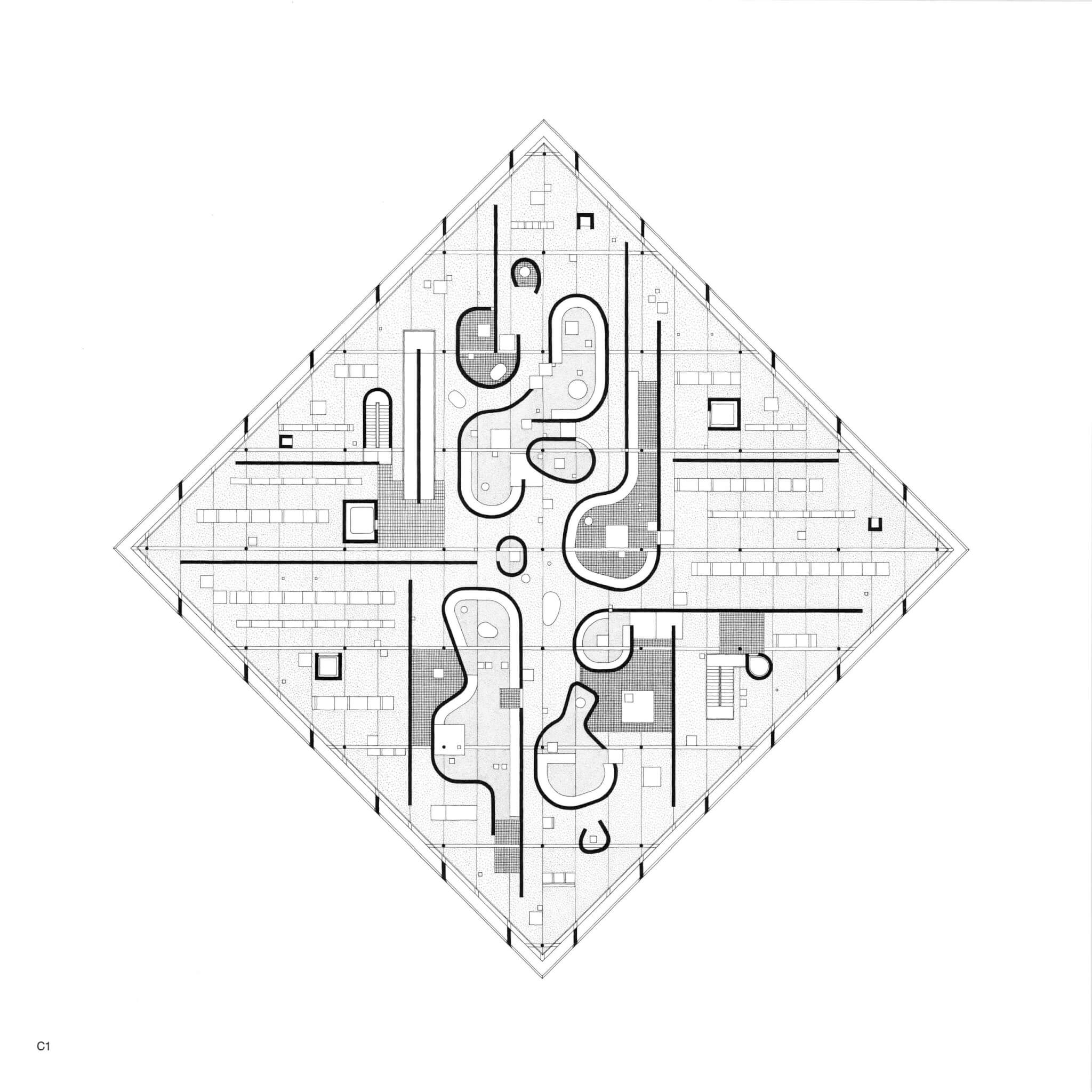John Hejduk: Three Projects
Third Floor Hallway Gallery
The Cooper Union
New York
Through October 3
On view this month at The Cooper Union John Hejduk: Three Projects offers a rare look back at the 1969 publication of the influential “Diamond Thesis” from John Hejduk, the New York Five giant and Irwin S. Chanin School of Architecture’s founding dean who began his teaching career there earlier that decade.
For the exhibition, organizers pried into the Architecture Archive in the interest of revisiting the foundations of Diamond Thesis. The show, mounted conspicuously on the walls of the Third Floor Hallway Gallery, displays drawings and other materials pertaining to his unbuilt Diamond Houses that were presented as conceptual tools in a 1967 Architectural League of New York exhibition. This latest exhibition showcases a trove of source documents relaying Hejduk’s propositions about what can be achieved by manipulating perspective and building form—ideas that substantiate the most essential dialogues on form and space to emerge from postmodernism.
Hejduk’s introduction of 90° axonometric projections into plans and drawings was inspired by an ongoing dialogue with his colleague Robert Slutzky on Cubism and rotational techniques in art and architecture. These helped guide a new understanding of how buildings shape and eventually become a living part of a total shared reality. Stan Allen, a former student of Hejduk, has elsewhere credited his mentor as having exhibited the most “complete description of the object.” Together with the other theoretical works of his cohort, they formed the first of several key experimental repositionings pertaining to the philosophy of space to have emerged from Postmodernism. Revisiting the work therefore provides a timely confrontation with design processes at a moment when pedagogy is once again reassessing drawing, abstraction, and generative frameworks in response to the transformative technological shifts that are taking place within architecture.
In Allen’s view and for other former pupils of Hejduk like The Cooper Union’s architecture program director, Steven Hillyer, the thesis constitutes an unprecedented innovation in the ways we conceptualize frontality and represent form. Students can translate inspiration from the drawings directly into their work in their adjacent studios, in the process teaching even more lessons—namely on the value of craftsmanship in representation—that are still an important aspect of the curriculum. It, more importantly, provides the public with the rare chance to see Hejduk’s original work outside of an academic archive. (I can attest their intellectual curiosity and the subsequent desire to dust off Mask of Medusa, which serves as a sort of bookend to the Diamond Thesis, from 1985.)

Today, while a flat mode of representation has come to permeate the discipline, the reproduced rapidograph drawings and other contextualizing documents included help to, as Hillyer puts it, “tether” the concept to better-known explorations of the nine-square grid problem and the later evocations of still life painting in residential designs that Hejduk pursued in the years to follow.



Aside from the obvious archival interest, the exhibition—which derives its strength from the private collections of historian Joan Ockman and others in addition to The Cooper Union’s robust Architecture Archive—succeeds in its desire to make an argument for the continued relevance of John Hejduk’s disagreement with architectural convention in the machine age.
Though the limitations of the hallway mean it is not entirely comprehensive, leaving out an untold trove of corresponding student work that would have calibrated the academic context in better dialogue with its hallowed setting (renovated by Hejduk) from 1961–1974), it is still effective as a simple presentation of (what are for many) the abstruse concepts at the front of a remarkable career. Hillyer related this to his position that the materials included in Three Projects likewise denote a “moment in an architect’s trajectory; and so, in highlighting that, [it] gives people the ability to think about their own paths and what they’re exploring at this moment.”

Three Projects is the first of three fall semester exhibits being staged inside the Foundation Building’s Hallway Gallery, where it takes advantage of the captive flow of students to engage in active learning opportunities. It will remain on view to the public through October 3. It precedes a facsimile reprinting of all ten editions of the Archigram magazine that opens on October 14.
Josh Niland is a writer and editor with work published in Artnet, Architectural Digest, Artforum, Hyperallergic, WHITEHOT magazine, and the Boston Phoenix. He holds a degree in philosophy from Boston University and worked previously as the featured staff writer at Archinect.
→ Continue reading at The Architect's Newspaper
